Day 1 Arrive Chennai
Arrive Chennai. Upon arrival you will met by our representative at airport & escorted you till check in hotel.
Chennai is the cultural heartland & gateway to the South India. Here on the east coast , ancient traditions of classical dance, music arts, handicrafts, literature, philosophy and religion have taken root and spread over India and to many parts of the world. In exchange, global influences flowed and were integrated. The Dravidians who have had the greatest influence on the life style of the people of Chennai were originally a Mediterranean race of same stock as the people of create, the pre Hellenic Aegean’s of Greece, and even the Paranoiac race of ancient Egypt. After they had migrated to India many millennia ago they absorbed some of the folkways and love of the earlier. Negroids and Austrics who had laid the foundation of Indian civilization. Later when Indo –Iranians, or Aryans percolated into Southern India, their social systems also had a significant and lasting impact on established customs and rituals.
Remaining day in leisure.
Overnight at hotel.
Day 2 Chennai-Mahabalipuram (approx. 60 Kms / 2 Hrs)
Morning post breakfast city tour.
Visit Fort St. George, completed in 1653 and today filled with reminders of the past, including St. Mary’s, the first church consecrated on Indian soil. The National Art Gallery has many excellent bronzes including the famous Chola period bronze Nataraja, the God Shiva, in the cosmic dance pose. The Government Museum (closed on Fridays), which contains sculpture and architecture produced by the Dravidian dynasties. Drive along the Marina, an elegant promenade and proceed to the old Indian section of Mylapore. Visit San Thome Basilica – St Thomas, the Apostle, is said to be buried h6re. He came here to spread the gospel, legend holds, barely a years after Jesus Christ’s crucifixion.
Continue drive to Mahabalipuram Enroute visit Kanchipuram.
The Golden City of Kanchipuram has about 125 shrines, all of them centuries old, dating back to the early Cholas of 200 B.C. It was successively capital of the Cholas, the Pallavas and the Rayas of Vijayanagara. The height of Kanchi’s glory was when it was capital of the far-flung empire of the Pallavas from the 6th to the 8th centuries when Mahabalipuram and Mylapore were its great ports. All that is left are its magnificent temples. Kanchipuram other claim to fame is its silk, renowned for more than four centuries. A unique system of weavers makes and sells Kanchi saris which are the richest saris in India and certainly the most sought after.
Continue drive to Mahabalipuram.
Mahabalipuram is a beautiful beach resort which consists of a the tiny village by the sea in which all else is dwarfed by a dream world of awesome Tamil art, an open air museum of sculpture in living rock. The piece de resistance is Arjuna’s Penance or the Descent of the Ganga, the world’s largest bas-relief, 764 ft. by 288 ft. (27m by 9m). It is a beautiful composition of hundreds of celestial beings, human and animals all hurrying to a natural rock cleft that divides the giant stone. The best known landmark of Mahabalipuram is the Shore Temple, which has stood by the sea for 12 centuries. Its twin spires are pure poetry in granite.
The other wonders of Mahabalipuram are the mandapams, each a cave scooped from a hillside of solid rock and ornamented with pillars, sculptured with panels and with rathams (monolithic rock-cut shrines) that have inspired generations of South Indian temple-builders. The five rathas, named after the Pandavas brothers, the heroes of the Mahabharata, and their wife Druapadi, are part of an amphitheater of art. Each temple though incomplete, remains a gem. Also in this area are a magnificent elephant and an exquisite Nandi, the sacred bull.
Overnight at hotel.
Upon arrival check in hotel.
Day 3 In Mahabalipuram
Morning post breakfast excursion temple and architecture.
Five Rathas: These rock-cut temples are rated as excellent examples of Pallavas art. Shaped in different styles, the five structures are named after the Pandavas brothers of the Mahabharata and Druapadi. These are monolithic temples, each created in a different style. They are also known as the Pancha Pandavas Rathas, and the four of the rathas are supposed to have been scooped out of a single rock formation.
Arjuna’s Penance: The world’s largest bas-relief measuring 27m x 9m is the pride of Mamallapuram. This huge whale-back shaped rock contains figures of gods, demigods, men, beasts, and birds and in fact, can be said to represent creation itself.
The Shore Temple: This is one of the oldest temples in South India. It belongs to the 8th Century A.D. and is a good example of the first phase of the structure of temples constructed in the Dravidian style.
Overnight at hotel.
Day 4 Mahabalipuram-Pondicherry (approx. 110 Kms / 3 Hrs)
Morning post breakfast drive to Pondicherry. On arrival transfer and check in at hotel
Pondicherry was the former capital of the French territories in India. Landmarks include the Raj Nivas, the Pondicherry Museum Aurobindo Ashram, and the best known landmark of Pondicherry.
Afternoon half day city tour.
Sri Aurobindo Ashram: This place was founded by Sri Aurobindo, who in the early ages was a revolutionist and then turned poet. His was jointly helped by The Mother, who was a Paris born painter. The Ashram is a centre for the practice of integral yoga, meditation, and of inner development.
Auroville: Auroville was inaugurated on 28th Feb. 1968 with representation from 124 countries. Auroville was envisioned as a Universal Town, where people from different nationalities, faiths and beliefs, can live in peace and harmony. It is an attempt to realize a new society as envisioned by Sri Aurobindo and the Mother. Nearly people from 35 countries are living here to realize on human unity and transformation of consciousness. Auroville welcomes people from all parts of the world to live together and explore cultural, educational, scientific, spiritual, and other pursuits in accordance with the Auroville Charter. Auroville information centre and Marti Mandir [Meditation hall with world’s biggest man- made crystal ball are the places open to most of the visitors. It offers less to see and lots to experience.
Overnight at hotel.
Day 5 Pondicherry-Swamimalai (approx. 140 Kms / 4 Hrs)
Morning post breakfast drive to Swamimalai.
Swamimalai, a popular pilgrim destination, is a panchayat town situated near Kumbakonam in Thanjavur district of Tamil Nadu. Swamimalai is one among the six ‘Padai Veedugal’ or ‘Six Holy Abodes’ (Battle Camps) of Lord Murugan, also known as Lord Karthikeya or Subramanian.
Situated on the northern banks of the River Cauvery, the village of Swamimalai is surrounded by popular destinations like Kumbakonam, Tiruvidaimarutur, Mayiladuthurai, Papanasam, Thanjavur and others. Swamimalai lies in the deltaic region of River Cauvery and is primarily an agricultural town and its main produce is rice and sugar cane. ‘Tiruverakam’ is the original name of the place though it is known popularly as ‘Swamimalai’, which means ‘God’s mountain’. The name ‘Swamimalai’ is derived from the Swaminathaswamy Temple, which is located on a hill, near the banks of River Cauvery.
Overnight at hotel.
Day 6 In Swamimalai
Breakfast in hotel.
Day free for Yoga & Spa.
Overnight at hotel.
Day 7 Swamimalai-Chettinad (approx. 90 Kms / 3 Hrs)
Morning post breakfast drive to Chettinad Enroute visit Tanjore & Trichy
Thanjavur (also known as Tanjore) is the royal city of the Cholas and Nayaks. Thanjavur derives its name from Tanjan-an asura (giant), who according to local legend devastated the neighborhood and was killed by Sri Anandavalli Amman and Vishnu. Sri Neelamegapperumal Tanjan’s last request that the city might be named after him was granted. Chola, Chera and Pandya kings were ruling Tamizhagam even before Mahabharata period. Chola kingdom was leading and patronizing literature, art, science and religion than the other two kingdoms. The capital city of Chola was always changing. Thiruvarur was the capital during Manuneethi Cholan. Uraiyur, Pazhaiyarai, Thanjavur and Gangaikonda Cholapuram used to be the capitals of Chola Kingdom. It has been believed from the Epics that many Chola kings were ruling from Thanjavur even before Karikala Cholan.
Trichy, situated on the banks of the Kaveri and commercial center of the fertile river deltas. Short orientation tour of the city with a visit to the Rock Fort. Visit the temple complex of Sri Rangam, the largest temple complex of Southern India, dedicated to Lord Vishnu and is famous for its beautiful sculptures. In the afternoon take a city tour of Tanjore and the Brihadeeswara Temple, considered the greatest temple ever built in India. Perfect symmetries, numerous frescos and paintings will delight you. Then you will visit the Thanjavur Palace, of which only ruins are partly preserved. In the palace there is an art gallery with bronze and granite statues and historic music hall. It is home to the Saraswati Mahal Library, which contains a collection of rare palm leaf manuscripts. In the evening take part in a cooking class and receive an introduction to South Indian cuisine. Of course, you can enjoy the delicacies prepared directly
After visit continue to Chettinad.
Chettinad is the home of the Nattukottai Chettiars called the Nagarathars who were and are still today, a prosperous banking and business community. This entire area is a major tourist spot with its temples, old palatial buildings, architecture, woodcraft, textiles and delicious cuisine. It also has a vivid history and culture. The biggest town in Chettinad is called Karaikudi and it is about 90 minutes’ drive from Madurai.
Overnight at Hotel.
Day 8 Chettinad – Madurai (approx. 90 Kms / 2- 3 Hrs)
Morning explore Chettinad Village.
Karaikudi and 74 other villages comprise Chettinad, the homeland of the Nattukottai Chettiars. The Chettiars were a prosperous banking community who ventured overseas to do business in Southeast Asia in the 19th and early 20th centuries. Their legacies are the fascinating houses of Chettinad they built. These are houses have to be seen to be believed and this would justify a trip to Chettinad
Just being discovered by the world, Chettinad is a rural area certain to surprise even the most discerning visitors. Apart from the houses, Karaikudi offers extensive antique shopping, weekly shandy [village market], a number of temples, visits to Craftsmen working with wood and metal, silversmiths and goldsmiths, attractive Textiles and most important the exciting Chettinad Cuisine.
post breakfast drive to Madurai.
Later leave for Madurai.
Madurai known as the City of Festivals, Madurai is the most ancient home of culture and the first Tamil Academy was founded here by scholars and pious kings. The town has developed encircling the famous Meenakshi Temple built in the Dravidian style – one for Shiva and the other for his spouse Meenakshi. It is believed that if you place a literary work in the tank of this temple, it will sink if it is worthless and float, if worthy. The temple has beautiful sculptures of Shiva. The court of a thousand pillars built in 1560 AD also has lovely sculptures. From any side inside the hall, the visitor can get a kaleidoscopic view. Outside the temple, are the Musical Pillars, which produce different swaras or notes when tapped. To the east, is the Vasant Mandapams with life-size statues of Nayaks of Madurai.
Upon arrival check in hotel.
Evening witness temple ceremony at Meenakshi temple.
The Evening Aarti Ceremony at the Madurai Meenakshi Temple is a must if you wish to observe the strength of the Hindi Faith. Join the daily procession as Sundareswarar (an incarnation of Shiva) is carried and laid to rest with his consort, Meenakshi (Parvati). The priests take blessings, lighting the holy flame with the aromatic camphor to the raucous of pipe and percussion instruments as the worshipper’s gathe and protrate before thei gods. Expect your spirit to lift!
Overnight at hotel.
Day 9 In Madurai
Morning post breakfast city tour of Madurai.
The `Temple City’ was the capital of the Pandya kingdom but it was during the reign of the Nayaks (10th to the 18th century) that the magnificent Meenakshi Temple. Visit the Palace of Tirumala Nayak, the most famous king of the Nayak dynasty. It has a great audience hall, a three-sided pavilion and a courtyard & Alagar.
Overnight at hotel.
Day 10 Madurai-Periyar (approx. 170 Kms / 4 – 5 Hrs)
Morning post breakfast drive to Periyar. On arrival transfer and check in at hotel.
Periyar is spread out over an area of 300 sq. miles and one can see leopard, tiger, elephant, bison and wild bear.
Evening boat ride in Lake Periyar to view wild life.
Periyar Park encompasses 26 sq. km. artificial Lake Take a boat ride on the lake to view wild life and water birds. Herds of elephants and bison come to the lake. Spotted deer and Sambar are also found here.
Overnight at Hotel.
Day 11 In Periyar
Breakfast in hotel.
Day free for leisure activity by own.
Overnight at hotel.
Day 12 Periyar- Phillipkutty farm (approx. 130 Kms / 4 Hrs)
Morning post breakfast drive to Phillipkutty farm house.
The farm is located on a small island (approximately 750 acres) in the backwaters by Vembanad Lake near Kumarakom within the Vechoor village limits. The farm is about 35 acres and is the largest farm on the island. The island is a reclaimed property which was built in the early 1950’s by my husband’s grandfather. It was my father-in-law, the late Phillipkutty, who undertook further development on the farm by bringing in a system of inter-crop farming. The island is called Puthankayal (‘Puthan’ means new) as it was the last island to have been reclaimed in the backwater region for agriculture.
The farm is made up of ridges and canals, with all the planting done on the ridges. The major crops on the farm were coconut, toddy tapping, nutmeg, cocoa, banana, pepper and many other fruits, vegetables and spices. The farm also has a few cows, geese, ducks and hens. We are members of the Vechoor Cow Trust and are doing our small part in the conservation of Vechoor cows by having three on the farm.
Evening cooking classes at farm house.
Overnight in farm.
Day 13 Phillipkutty -Kumarakom (approx. 30 Kms / 1 Hrs)
Morning post breakfast drive to Kumarakom.
Morning after breakfast drive to Kumarakom. On arrival check in at Hotel.
Kumarkom, a quaint little places on the backwaters of Kerala. It lies on the eastern shore of the Vembanad Lake, which is a bird sanctuary. Waterfowl, cuckoo and wild duck can be seen in abundance here. In winter, large flocks of migratory wild duck from Siberia come in spectacular formation to roost. Kumarkom lies in a timeless world of gentle, unhurried activity.
Balance day at leisure to explore surroundings on own.
Overnight at Hotel.
Day 14 Kumarkom-House Boat
Morning post breakfast drive to Alleppey.
Morning drive to Alleppey to board the traditional houseboat to go on overnight leisurely backwater cruises along lake. Cruise through backwaters towards. Boat will be anchored in the backwaters along paddy field.
A House Boat is about 70 feet in length and has a width of around 13 feet in the middle. The materials that go into the making are all local and Eco friendly bamboo poles, coconut fiber ropes, bamboo mats, coir carpets etc. The House Boats have fully furnished single and double rooms with Sundeck, comfortable chairs, Kitchen and toilet with A/C. In addition there is also separate rest room for the crew. Traditional lanterns are used as lights. The crew includes a chef and two oarsmen. The houseboat takes you through the scenic backwaters of Kerala. The Traditional Kerala cuisine will be served on the board.
Overnight on board.
Day 15 House Boat-Cochin (approx. 65 Kms / 2 Hrs)
Morning disembark from Boat and drive to Cochin. Upon arrival check in hotel.
Morning drive to Alleppey to board the traditional houseboat to go on overnight leisurely backwater cruises along lake. Cruise through backwaters towards. Boat will be anchored in the backwaters along paddy field.
Cochin, originally built by the Portuguese, has a natural harbor with lagoons, canals and fishing hamlets. One of the three biggest ports on the West Coast, it is also an industrially developed area. The coir industry is of special importance. There is golf and swimming for the sporty tourist. An excursion by boat through the backwaters is enchanting.
Evening witness the Kath kali dance at the Auditorium.
Kath kali performances, a dance-drama based on the ancient epics forming among the most colorful of the country’s stage tradition. Male actors in makeup that takes as much as two to three hours to apply cavort on the stage in a spellbinding display of morality-theatre. The women perform the more graceful dance form, the Mohiniattam.
Overnight at Hotel.
Day 16 In Cochin
Morning post breakfast city tour of Cochin.
Morning visit Mattancherry Dutch Palace – open from 10.00 to 15.00 hrs. (Closed on Fridays and public holidays), which was built by the Portuguese in 1555 and renovated by the Dutch in 1663. In the ancient rooms are 17th century murals that relate in vibrant color the story of the epic Ramayana. Visit a Jewish Synagogue – open 10.00 to 12.00 hrs. & 1500 hrs. to 1700 hrs. (Closed on all Saturdays and Jewish holidays) in Jew Town and Fort Cochin Area – Legend dates Jewish trade with Kerala from the times of King Solomon. There are a couple of streets of picture-postcard houses out of another age, in 17th century Dutch and traditional Kerala styles. Visit St. Francis Church – open from 09.00 to 13.00 hrs. And 14.30 to 17.30 hrs. (Closed for visitors on Sundays from 08.00 to 11.00 hrs.) the oldest European Church in India. It has several antiquities including a wealth of records. These include a palm-leaf title deed the local Raja gave the Portuguese in 1503. See the Chinese Fishing Nets, along the tip of Fort Cochin unique to this part of Kerala and living symbols of a centuries-old Chinese influence on this coast.
Afternoon Cooking classes with Minni Paul.
Overnight at hotel.
Day 17 Leave Cochin
In time transfer to airport to connect flight to onwards destination.

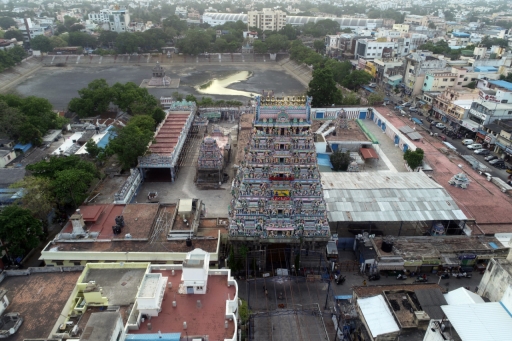
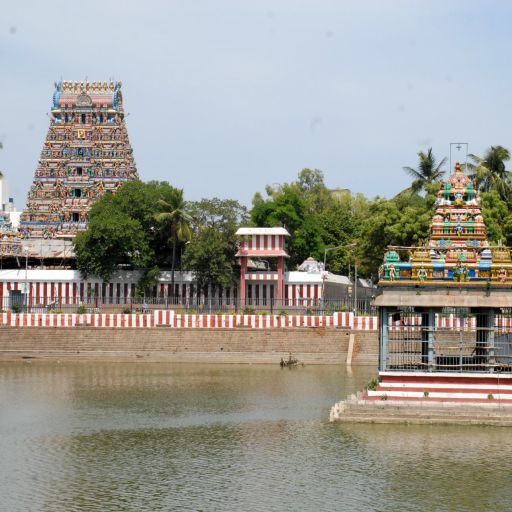
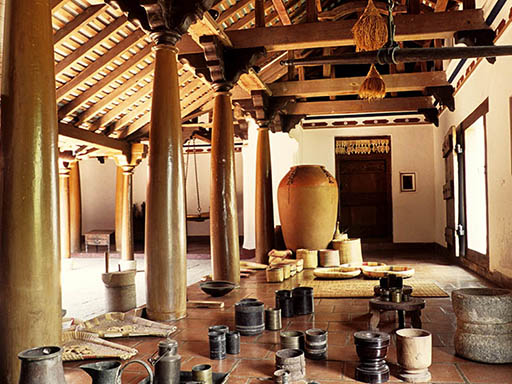

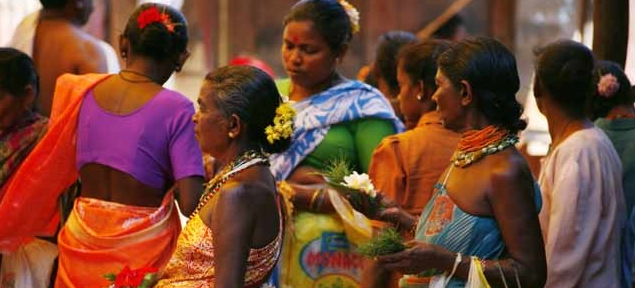

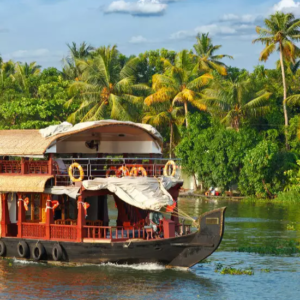
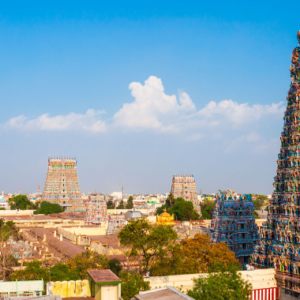
Reviews
There are no reviews yet.